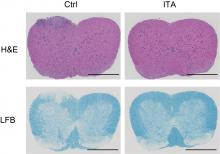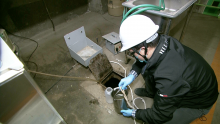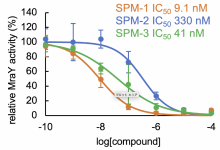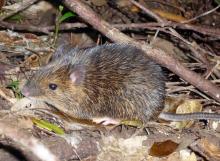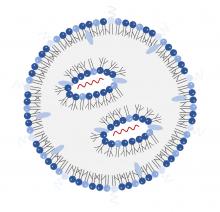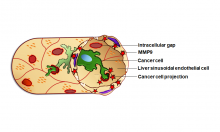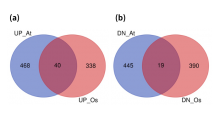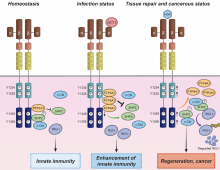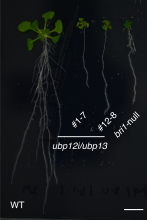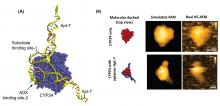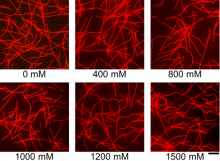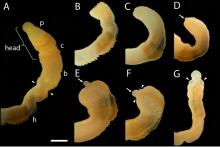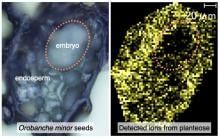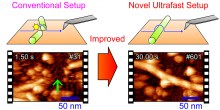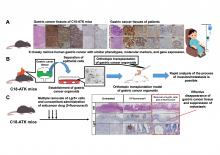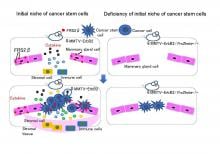Biology Molecular biology
News
02 Mar 2023
Lipid nanoparticles have been used to encapsulate CRISPR-Cas9 and deliver it to cells in mice, where it was highly effective at knocking down expression of a target protein.
21 Feb 2023
Sifting through sewage for SARS-CoV-2 genetic material could help authorities tailor infection control policies.

12 Feb 2023
In hepatic steatosis, hepatocytes "die," resulting in liver damage. Severe steatosis increases hepatocellular deaths, thus aggravating liver damage. The mechanism is unclear. Using mice, we show that mild steatosis causes apoptosis whereas severe steatosis predominantly causes necroptosis leading to cell rupture. This induces strong inflammation and new cell death, producing further liver damage. We reveal the transcription factor ATF3 to be involved in this process. Our results are expected to contribute to therapeutic method development.
02 Feb 2023
A new microscopic technique allows for the real-time study of RNA G-quadruplexes in living cells, with implications for the fight against amyotrophic lateral sclerosis.
20 Jan 2023
Overeating mechanism: why "eating just one chip"🍟 is impossible, Measuring hidden energy of gamma-ray bursts, Marine species that can adapt to ocean acidification & A rough start can lead to a strong bond, Read all in our first Editor's Choice of 2023. Plus our interview on what dengue vaccine approval in EU💉means for global dengue protection.
11 Jan 2023
A team of Japanese researchers created a high-quality genome assembly of red perilla, a step toward harnessing the plant’s potentially useful bioactive chemicals — and its medicinal properties.
23 Dec 2022
Scientists reveal genetic mechanism associated with high-calorie food-fueled obesity
20 Dec 2022
Researchers have designed and synthesized analogs of a new antibiotic that is effective against multidrug-resistant bacteria, opening a new front in the fight against these infections.
14 Dec 2022
Using cryogenic electron microscopy, a research team from the Research Center for Artificial Photosynthesis (ReCAP) at Osaka Metropolitan University has revealed, for the first time, the structures and binding environments of pigments bound to a protein called a photosynthetic antenna of the marine green macroalga Codium fragile. The team’s results extend our knowledge about the molecular mechanism by which blue-green light—the only light available in deep seawater—is efficiently utilized for photosynthesis.
28 Nov 2022
The Sox9 gene is upregulated in the absence of sex-determining Y chromosome and Sry gene in Amami spiny rat.
10 Nov 2022
A novel branched lipid that has a high stability in storage and a high efficiency in the delivery of mRNA to cells has been developed.
01 Nov 2022
Triple-negative breast cancer (TNBC) tumors gain immunosuppression and chemoresistance through interactions between interleukin 34 and myeloid-derived suppressor cells, researchers find.

01 Nov 2022
6th NanoLSI Symposium: International symposium on Nanoprobe Technology for Understanding Molecular Systems in Kanazawa, Japan
20 Oct 2022
Giants in History: Maharani Chakravorty (1937 – 2015) was one of India’s earliest molecular biologists whose research paved the way for advances in the treatment of bacterial and viral infections.
04 Oct 2022
Metastasis—when cancer spreads to form new tumors—causes approximately 90% of cancer-related deaths. Because metastatic cancer cells circulate in the blood, the liver—which filters the blood—is considered the most vulnerable organ, so treatments that prevent liver metastasis are urgently needed. A team of Osaka Metropolitan University researchers discovered a mechanism that allows metastatic cancer cells to infiltrate the liver, and how that infiltration can be blocked by inhibiting a related protein.
29 Sep 2022
A simple and economical method of detecting SARS-CoV-2 viral loads in wastewater with high sensitivity has been developed, expanding the use of wastewater-based epidemiology for tracking the virus in populations.
08 Sep 2022
Researchers at Hiroshima University are closer to identifying the molecular processes underlying how floods deprive plants of oxygen — and how to engineer hardier crops.
05 Jul 2022
Innate immunity is activated when the pattern recognition receptors (PRRs) recognize pathogen-associated molecular patterns (PAMPs). We show that a liver-derived secretory protein LECT2, a hepatokine, binds to the HGF receptor MET, a proto-oncogene product, to suppress the proliferation signal of MET. LECT2 activates retinoic acid-inducible gene-I, enhancing antiviral and innate immune responses through MET. Thus, LECT2 is an anti-proliferative and immunoregulatory factor that could be a therapeutic target for viral infections and cancer.
16 Jun 2022
Scientists have revealed the genetic structure and diversity, and inferred the population history, of the wild house mouse across Europe and Asia.
03 Jun 2022
Scientists have revealed two enzymes that regulate protein degradation of proteins in the cell membrane of plants, and established the roles they play in plant growth and development.
25 May 2022
Researchers at Kanazawa University in collaboration with teams from Toyama Prefectural University and BioSeeds Corporation report in ACS Applied Materials & Interfaces the identification of a molecule with enhanced antiproliferative activity in cancer cells. The underlying biomolecular mechanism is the inhibition of an enzyme that is overproduced in several types of cancer.
26 Apr 2022
Researchers set out to find new ways to artificially induce mRNA to respond in ways that could eventually lead to therapeutic outcomes, expanding on the success of the mRNA-based COVID-19 vaccines and opening up new possibilities across a host of possible genetic therapies.
07 Apr 2022
The molecule trimethylamine N-oxide (TMAO) can be used to reversibly modulate the rigidity of microtubules, a key component of molecular machines and molecular robots.
09 Mar 2022
Tests using a mouse model of Alport syndrome suggests that turning off a cell signalling protein may significantly prolong life by preventing kidney scarring.
15 Feb 2022
Better understanding of regeneration in hemichordates may eventually lead to advances in reparative medicine
06 Jan 2022
Enzymatic hydrolysis of planteose: α-Galactosidase is a promising molecular target for root parasitic weed control
04 Jan 2022
Researchers at Kanazawa University report in Applied Physics Letters the design of an ultrafast amplitude detector for use in high-speed atomic force microscopy. The detector will enable the real-time recording of fast dynamical processes of biomolecules.
22 Dec 2021
We have succeeded in establishing a mouse model that develops gastric cancer closely resembling advanced human gastric cancer. Using this model, we have discovered gastric cancer stem cells, i.e. Lgr5+ gastric cancer cells, essential for the development, maintenance, and metastasis of cancer. Our study provides an experimental system that enables detailed analysis of highly malignant gastric cancer and is expected to lead to the development of a breakthrough treatment for advanced human gastric cancer.
08 Nov 2021
We have clarified at the molecular level the mechanism by which a microenvironment, a so-called niche that surrounds cancer cells, is formed in which stromal cells and immune cells are attracted at an initiation stage of breast cancer onset. A molecule called FRS2β is found to be critical for creating this microenvironment. The present finding is expected to be beneficial in prevention, diagnosis and treatment of cancers at the initiation stage.
Events
Sorry, nothing coming up for this discipline
Researchers
Sorry, nothing coming up for this discipline
Giants in history
Sorry, nothing coming up for this discipline


